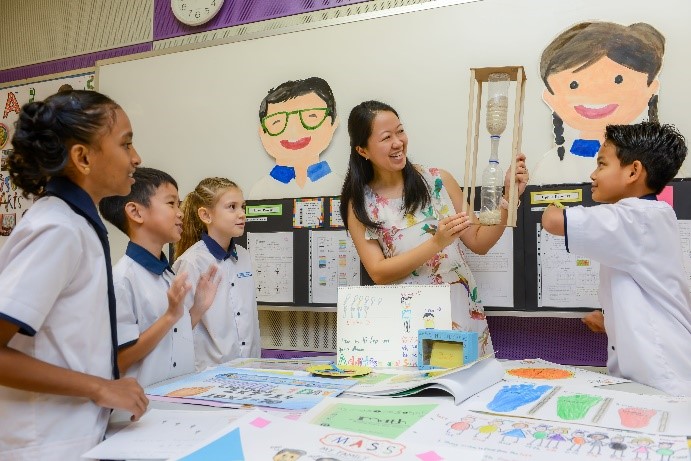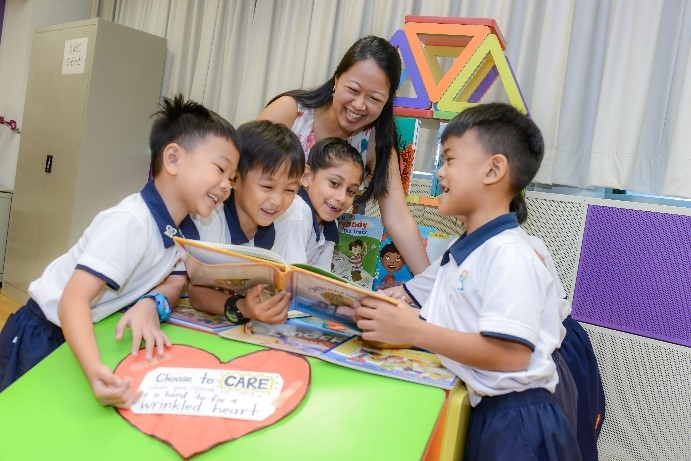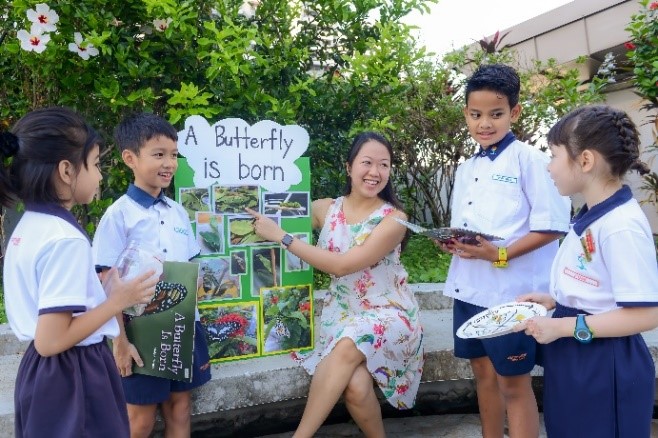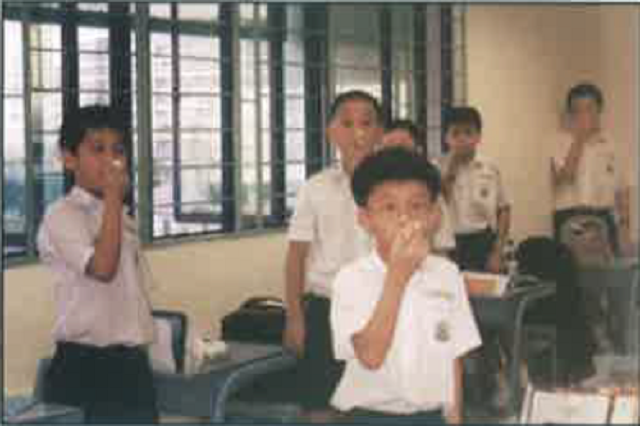Ms Tang Li Hui Donica, Cantonment Primary School, Outstanding Youth in Education Award 2019 Finalist
The caterpillar hunt
Having breakfast with my students during recess is usually a happy affair. That day, however, Sarah* was on the verge of tears. ‘Ms Tang, I feel sad.’ When I asked her why, she said a friend had told her he was getting a dog for his birthday and she knew she would never have a pet because her family could not afford one.
The conversation made me realise that at least half of my class might not get the opportunity to care for a pet.
As I planned my English lessons for the book, ‘A Butterfly is Born’, an idea came to mind. I could bring the storybook to life and, at the same time, give Sarah and her classmates an experience they might never have. It was time to go caterpillar hunting!
‘Are those caterpillars?’, ‘They are so cute!’, ‘Why are they so tiny?’ Excitement filled the air when I stepped into the classroom with two little caterpillars in a jar. Over the next few weeks, my students adopted the caterpillars as class pets, named them Burpy and Ronaldo, fed them fresh leaves, and even cleared out the droppings. The caterpillars grew bigger, began molting, and became pupae. Some students researched on the different species of butterflies in Singapore and tried to guess which would emerge from the pupae. Others had discovered how long each stage of the life cycle was and were predicting when the butterflies would emerge. There were even a few who had delved into the life cycles of other insects, which they found fascinating, and were eager to share with the rest of the class. For Sarah, she had stapled pieces of rough paper together to form a scrapbook with dates, illustrations, and captions that chronicled the life of her very first pets.
Rather than simply reading a story about butterflies, my students had first-hand experience with them and were inspired to learn about them on their own. This would help them see learning as a lifelong journey of discovery. Like the beautiful Common Mormon butterflies that emerged, my class had likewise transformed.
Making Mathematics count
My next challenge was helping these young minds realise that everything they were learning was relevant to their daily lives. Often, they merely apply the content knowledge from Mathematics lessons and textbooks to answer the questions from their workbook or worksheets. I did not want my students to learn with such a narrow mindset. I wanted them to make the learning of Mathematics count.
My colleagues and I, thus, initiated a Maths Scrapbook project where students become active learners and apply Mathematics creatively in familiar settings. Each child could explore the subject in the canteen, supermarket, at home or around their neighbourhood by choosing tasks related to the topics they were learning. Then, they would document their findings in a scrapbook. For the topic, ‘Addition’, they counted the forks and spoons in their kitchen, drew them, and wrote an equation to show the total number. For ‘Subtraction’, they recorded the ages of their family members and found the age difference between the oldest and youngest member.

Learning and applying Mathematics in authentic contexts.
The students’ responses were heartening. One parent said she was overjoyed to see her son so enthusiastic about the project. “It helped Ethan* understand that Math concepts are not only for exams or worksheets but can also be used in day-to-day life.”
We had successfully created a platform for authentic learning but we also had our fair share of struggles. Firstly, we had to design differentiated levels of tasks for each topic to encourage the lower progress learners while also challenging the higher achieving ones. Secondly, I was mindful that the materials for each task had to be simple items available in every household, so that every child, regardless of socio-economic background, could attempt the tasks.
This ties in closely with my teaching philosophy. I believe that education is for all, regardless of the student’s background, aptitude for learning, or motivation to learn. In my classroom, I promote inclusiveness and equity by ensuring that those with special needs are well integrated, lower progress learners are given additional resources to bridge the gap, and those who favour certain learning activities are provided with meaningful opportunities.
The flowering of values
Above and beyond their academic subjects, I want to inculcate moral values in my students. I found that sharing storybooks portraying values like respect, graciousness, and integrity help students to internalise and exemplify them. For instance, we read ‘Chrysanthemum’, a story by Kevin Henkes about a young mouse who cherished her unique name until her classmates made fun of her for it. While listening to it, the children took turns to crumple a large, red paper heart each time Chrysanthemum’s feelings were hurt by something mean her classmates said or did. At the end of the story, my class tried to mend the torn and crumpled heart but could not. They realised the irreversible impact of their words and actions. ‘Before you speak or act, think and choose to care. It is hard to fix a wrinkled heart.’ When I overheard my student say this, my heart was full.

Students reading the ‘Chrysanthemum’ storybook together.
My students are now more inclusive and know how to be kind to one another. They have realised that, beyond good grades, what is more important are values that would shape how they live their lives in future.
*Names have been changed to protect the identities of the students.






